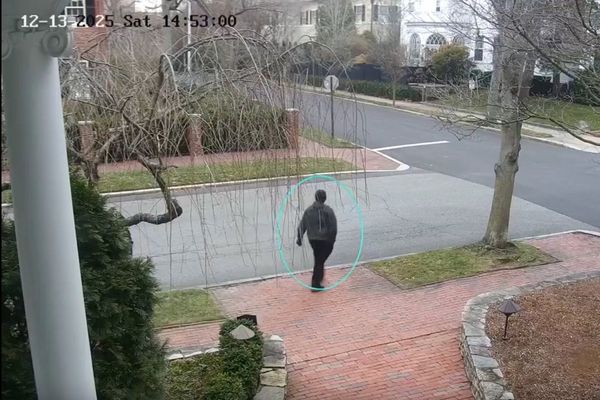
Do you ever wish you could travel back to a simpler time? The days before the internet and the nine to five grind? Before taxes? Car payments? The 24 hour news cycle? A simpler time, when the world was younger, freer, full of possibility! I don’t mean some nostalgia-drenched version of the 90’s, I mean a much simpler time, the prehistoric era! Imagine it, you on the back of a wooly mammoth, riding through the pristine wilderness! Butt naked! Shrieking with primal delight! Chucking spears at stuff! That’s the kind of life I wanna live. And while I’ll never be able to return to the days of my ancient ancestors, these 10 sci-fi books about time travel will help me keep the fantasy alive.
This Is How You Lose The Time War

Amal El-Mohtar and Max Gladstone’s This Is How You Lose The Time War is the story of two rival time travelers fighting on opposite sides of a temporal war. Red and Blue are agents of two separate time travel empires, tasked by their superiors to alter the past in order to secure victory in the future. During the pair’s jaunts across the time stream, they begin to recognize each other’s work – and sabotage it. As they thwart each other’s best laid plans, they begin to correspond, first with taunts, then with casual conversation, then with declarations of total devotion. Sapphic enemies to lovers time travel fiction that doesn’t end in queer tragedy? Makes me wanna travel back in time and punch H.G. Wells in the face for not introducing an idea like this to us sooner.
Slaughterhouse Five

Slaughterhouse-Five by Kurt Vonnegut is the story of Billy Pilgrim, a man who becomes “unstuck in time” after extraterrestrial meddling. A former POW who survived the Allied firebombing of Dresden during World War II, poor Billy is recaptured again by the Tralfamadorians – an alien race that is able to perceive all time at once. As if dealing with meaningless suffering created by war hard bad enough, Billy faces even more existential ennui now that he is able to freely time travel through different points of his life. When you know how future you will live and die, how is present you supposed to find any sort of peace? A survivor of the Dresden bombing himself, Vonnegut penned this novel as a mediation on the horrors of war – which Billy attempts to process through temporal dissociation. And so it goes.
The Time Machine

The Time Machine by H.G. Wells is the original time travel novel, released at the very end of the 19th century. It’s a time capsule in and of itself! Wells tells the tale of a Victorian scientist who has created the first ever time travel device, but rather than go back in time to kill his grandfather and see if it ends his own existence, the unnamed Time Traveler decides to go forward into the future instead. While that sounds like a better idea on paper, the Traveler soon learns that it’s anything but. Eons after you and I are dust, the Traveler stumbles upon our distant descendants – two intelligent species with a predator/prey relationship. Like a nerd stumbling into a cool kid party, the Time Travel kills the future’s vibe fast – who would have guessed giving the gift of fire to a species not intelligent enough to understand it would be a bad idea?
Hyperion

While Dan Simmons’ Hyperion series is full of all manner of temporal madness, going into detail about the time travel would do nothing but spoil the plot. All I can say is that this space opera is a retcon of the Canterbury Tales, where seven pilgrims from across the galaxy set a course for a distant planet. Planet Hyperion described more mythically than scientifically, and said to be the home of The Time Tombs, a temporal anomaly said to be able to grant heart’s desire. The Tombs are guarded by a time traveling monster known as The Shrike, a red-eyed android named for its penchant for impaling things on spikes like a certain sociopathic species of Earth birds. What are The Time Tombs? Why is The Shrike such a menace? Will these seven pilgrims survive long enough to reap the temporal benefits? When it comes to predicting the future, your guess is as good as mine.
Recursion

You know when someone says something nasty and you think of the perfect comeback five minutes later, but it’s already too late? What if there was a device that would allow you to go back into the past and drag your hater to heart’s content? In Blake Crouch’s Recursion, there is! And spoiler alert: it’s not worth it. After a scientist develops a method for people to dive back into their own lives and make different decisions, reality begins to unravel. The populace is affected by False Memory Syndrome, a dementia-like condition where conflicting memories cause mental deterioration. As time paradoxes spread like a wine stain across the fabric of spacetime, the world itself begins to change. Alternate realities bleed together. Cities disappear and reappear. People don’t know what to believe. This novel is a warning: time travel should stay science fictional.
How To Live Safely In A Science Fictional Universe

Charles Yu’s How To Live Safely In A Science Fictional Universe the how-to safety manual that the characters of Recursion sorely needed to read. It’s the story of Charles Yu – the character, not the author – who works as a time machine mechanic. He also happens to live in one, along with his dog and a depressed computer named TAMMY. Charles travels around a pocket universe servicing time machines of would-be time travelers, and while on the daily grind, he ends up accidentally shooting his future self. As future Charles lays dying, he tells past Charles that he must complete the loop – by getting shot by a past self. A sad, satirical, and self-referential novel, How To Live Safely is the dour cousin of A Hitchhiker’s Guide To The Galaxy.
Death’s End

The final installment of Cixin Liu’s The Three Body Problem series, this mind-bender of a novel revolves around Cheng Xin – a young aerospace engineer tasked with stopping an alien invasion. In order to oversee Earth’s technological advancement, Cheng is periodically frozen in a cryogenic chamber, awakening in futures where the theories of the past become the realities of the present. While not a time travel novel in the traditional sense, Cheng has to contend with the isolating effects of time dilation as humanity pursues light speed travel. A hard science novel to the core, Death’s End is a study in weaponizing the effects of time to win a cosmic war – and a chronicle of the human beings caught in the crossfire. Considering the novel takes place over a billion years at least, that’s a lot of causality casualties.
Kindred

Octavia E. Butler’s Kindred is the story of Dana, a modern day Black woman who finds herself inexplicably transported back to the antebellum South. After running afoul of a Maryland plantation owner and his unsavory family, Dana is sent back into the future – traumatized by what she experienced. As the novel progresses, Dana is forced to spend longer and longer amounts of time in the past, and as time passes, she realizes with mounting horror that the plantation’s grim history is somehow tied in with her own ancestry. Part sci-fi, part horror story, Kindred is a nightmarish novel about the ugliest days of America’s past.
This Time Tomorrow

This Time Tomorrow by Emma Straub is a sadder version of 17 Again. On the night of her 40th birthday, a woman named Alice wakes up in the body of her sixteen year old self – shocked to see her dying father of the future young and healthy again. As Alice jumps back and forth between the past and the present, she attempts to change the modern day in little ways. While she carefully attempts to avoid screwing with the future too much, even the slightest brush against yesterday can send tomorrow spinning in an entirely new direction. This novel is not a cerebral time-travel mind-bender, but a tender story about a woman given a second chance to repeat past mistakes and reconnect with people that she lost touch with in the modern day.
Thrust

Thrust by Lidia Yuknavitc is the story of Laisvė, a young woman who has a special, temporal power. Known as a “carrier” Lidia is able to leave her 21st century dystopia and travel back into the past by touching objects that hold an emotional history. After picking through the wreckage of a forgotten city of the past, Laisvė uncovers a relic that bonds her to a series of people who lived as far back as the Gilded Age. Accused criminals, French sculptors, a dictator’s kid, a group of workers building something like the Statue of Liberty, the past is full of all sorts, and Laisvė is going to run into all of them in her struggle to return to the present.
Have a tip we should know? [email protected]







